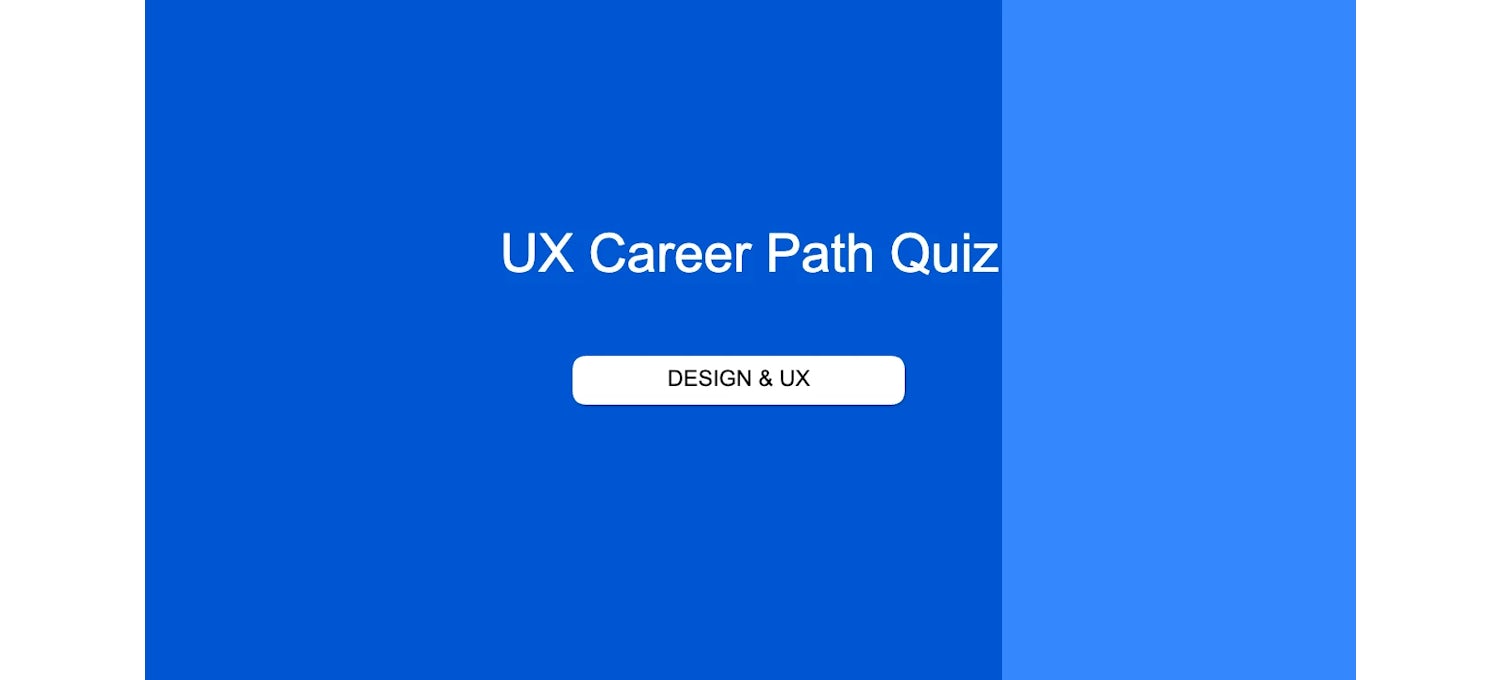UX Career Quiz: Is It Right for You? Find Your Role
Discover your ideal user experience career path with this career assessment quiz.

User experience (UX) design is a dynamic and rewarding field that focuses on improving the interactions between users and digital products. Whether you’re designing user-friendly websites, apps, or software, the goal is always to create intuitive, seamless experiences that delight users. However, with various roles within the UX field, it can be challenging to know which path is right for you. This quiz covers key career paths in UX, including UX research, UI design, interaction design, and usability analysis. By answering a few simple questions, you’ll receive personalized recommendations based on your responses.
Choose the answers that best reflect your natural interests, thinking style, and problem-solving approaches to discover your ideal path in the evolving landscape of user experience design.
Quiz Structure
10 multiple-choice questions
Takes approximately 5-10 minutes
Immediate results with career recommendations
Custom learning paths based on results
User Experience Career Quiz
Understanding Your UX Career Quiz Results
Your assessment evaluates four core UX domains: UX Research (UR), UI Design (UI), Interaction Design (IX), and UX Analytics (SA). Each role requires both primary expertise and complementary skills, as modern UX positions demand versatility and cross-domain knowledge.
Interpreting Your Progress Bar Display:
Green bars: Strong Alignment - Your responses indicate natural inclination and interest in this domain
Orange bars: Development Opportunity - You have a foundational interest, but may benefit from more exploration
UX Career Path Overviews & Learning Recommendations
UX Research Path (UR)
Focus: Understand user behaviors, needs, and motivations
Key skills: Qualitative research methods, User interviewing, Usability testing, Research synthesis, Behavioral psychology
Daily work: Conducting user interviews, Running usability studies, Creating research plans, Analyzing user feedback, Presenting research findings
Growth potential: UX Researcher → Senior UX Researcher → Research Lead → Head of User Research
Learning paths: Google UX Design Professional Certificate, User Experience Research and Design Specialization, Qualitative Research Methods, Interaction Design Specialization
UI Design Path (UI)
Focus: Create visually appealing and intuitive interfaces
Key skills: Visual design principles, Typography, Color theory, Design systems, Prototyping tools (Figma, Sketch)
Daily work: Creating UI mockups, Maintaining design systems, Visual design iteration, Collaborating with developers, Building component libraries
Growth potential: Junior UI Designer → Senior UI Designer → Lead Designer → Design Director
Learning paths: UI/UX Design Specialization, Design Fundamentals, Create High-Fidelity Designs and Prototypes in Figma
Interaction Design Path (IX)
Focus: Design how users interact with products and services
Key skills: User flows, Information architecture, Interaction patterns, Wireframing, Prototyping
Daily work: Creating user flows, Designing interactions, Building wireframes, Prototyping solutions, Documenting design decisions
Growth potential: Interaction Designer → Senior IxD → Lead Interaction Designer → Product Design Director
Learning paths: Interaction Design Specialization, Web Design: Strategy and Information Architecture, Human-Centered Design, Design Thinking Specialization
UX Analytics Path (SA)
Focus: Measure and optimize user experience through data
Key skills: Quantitative analysis, A/B testing, User behavior analytics, Data visualization, Statistical analysis
Daily work: Analyzing user metrics, Running A/B tests, Creating dashboards, Tracking KPIs, Making data-driven recommendations
Growth potential: UX Analyst → Senior Analytics Designer → Analytics Lead → Head of UX Analytics
Learning paths: Google Analytics Professional Certificate, Meta Data Analyst Professional Certificate, Quantitative Research, IBM Data Analysis and Visualization Specialization
Remember: The UX field values diverse perspectives and backgrounds. Your unique combination of interests and skills can bring valuable insights to any UX role you pursue.
Grow your UX career with Coursera
Whether you want to develop a new skill, get comfortable with an in-demand technology, or advance your abilities, keep growing with a Coursera Plus subscription. You’ll get access to over 10,000 flexible courses in AI, business, technology, and more.
More Quizzes to Explore
FAQs
UX 专业人员通常兼具同理心、解决问题的能力和创造力。他们对用户行为充满好奇,擅长提出正确的问题。沟通能力是关键,因为用户体验职位通常需要与开发人员、利益相关者和其他设计师合作。注重细节、适应能力强、熟悉用户体验工具(如 Figma、Sketch 或可用性测试软件)也有助于取得成功。
打造 UX 职业生涯的时间表取决于你的起点和学习方法。一些学习者通过完成密集的训练营或证书课程并建立强大的作品集,在3-6个月内过渡到用户体验领域。其他人可能需要一年或更长的时间,尤其是通过实习或兼职项目积累经验。只要坚持不懈地努力,大多数专业人员都能在两年内从初级晋升到中级,而高级职位通常需要数年的项目实践经验。
虽然所有这些角色都隶属于更广泛的用户体验范畴,但它们发挥着不同的功能。UX 设计侧重于通过 Wireframe、原型和 User Flow 来创建流畅、直观的用户体验。UI 设计专注于视觉方面,如调色板、排版和布局,使 Interface 更吸引人、更方便用户使用。而用户体验研究则是通过访谈、调查和测试来了解用户行为,从而为设计决策提供指导。测验有助于确定哪个领域最适合您的个性和技能。
Coursera
Writer
Coursera is the global online learning platform that offers anyone, anywhere access to online course...
此内容仅供参考。建议学生多做研究,确保所追求的课程和其他证书符合他们的个人、专业和财务目标。
